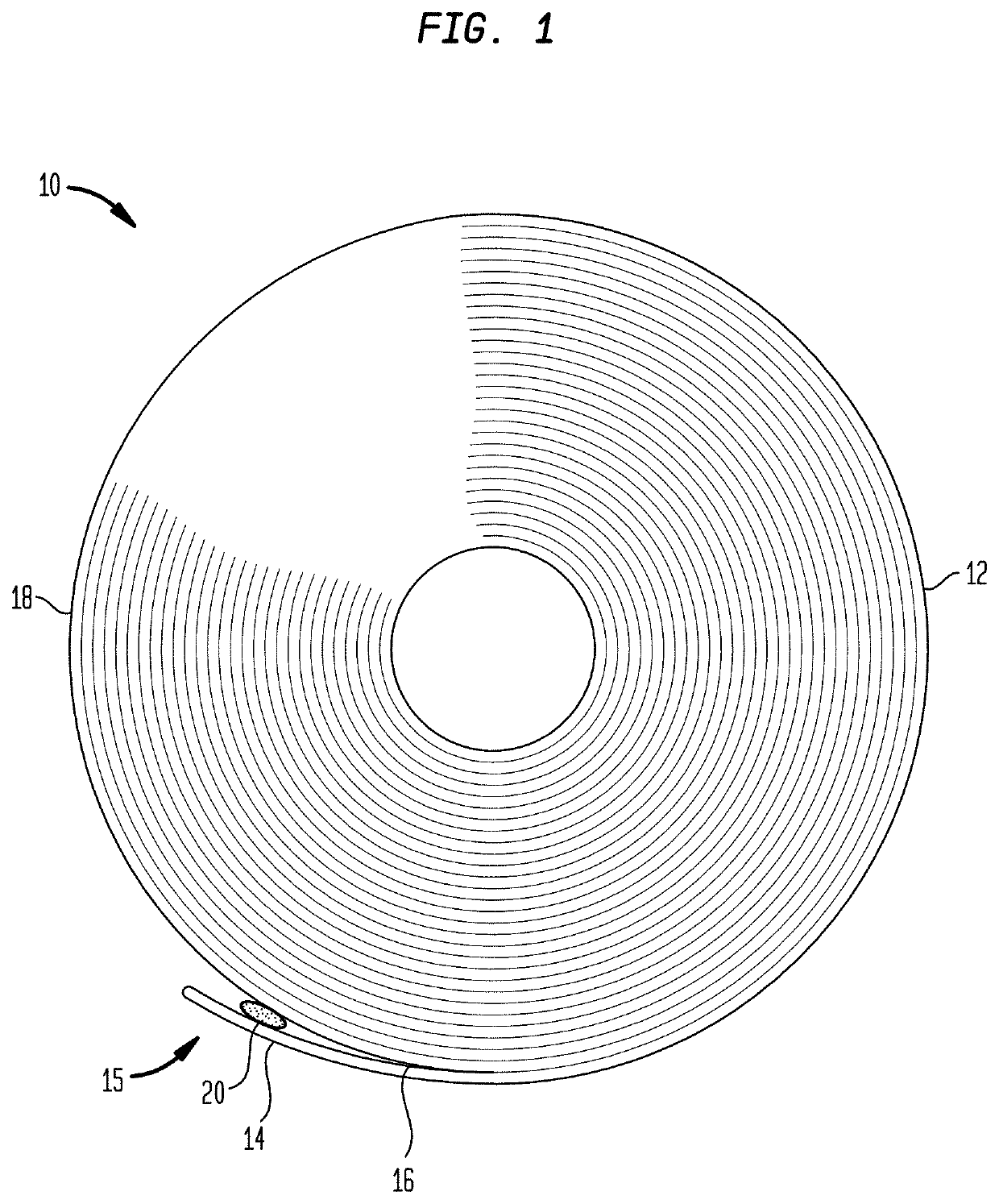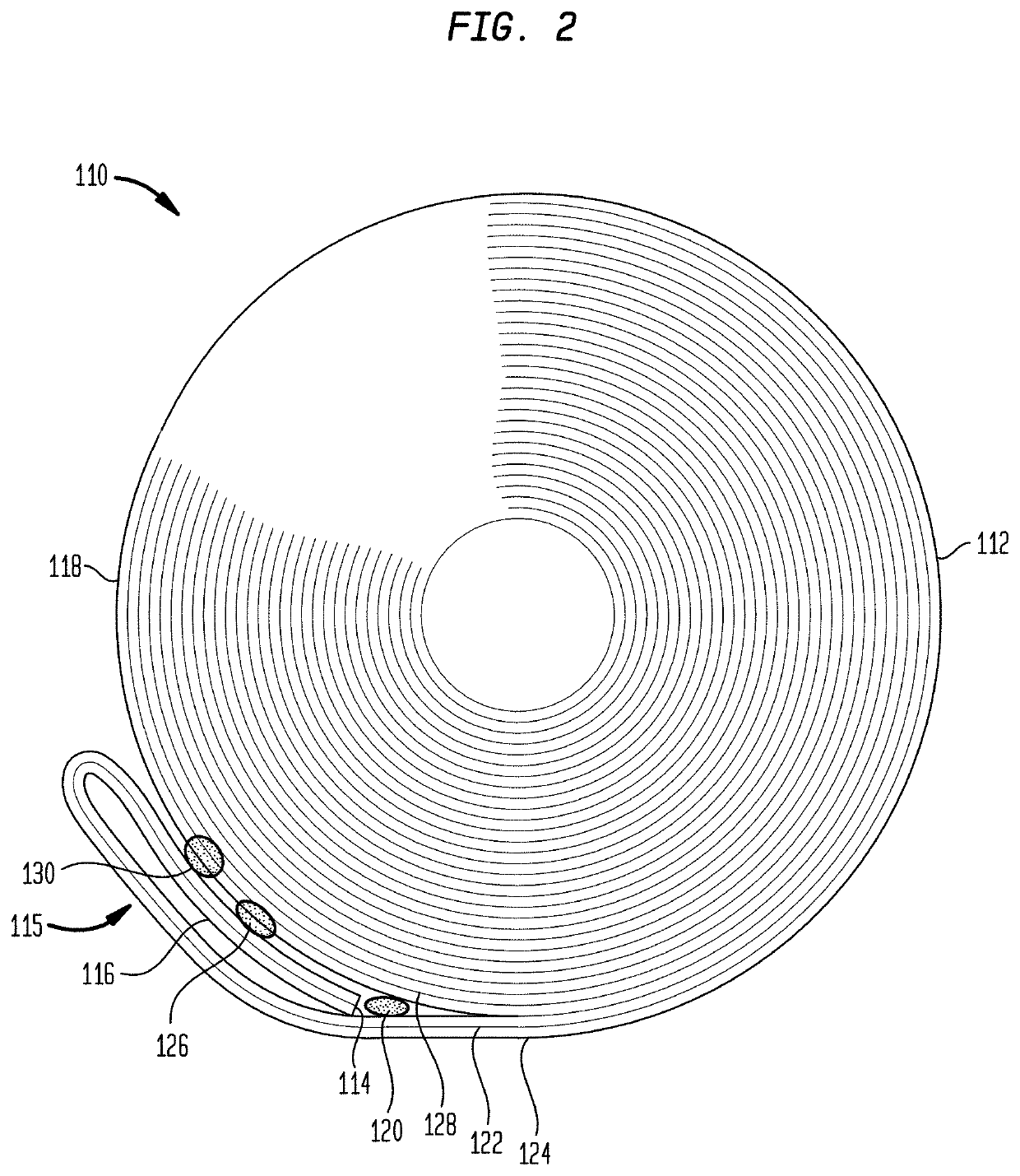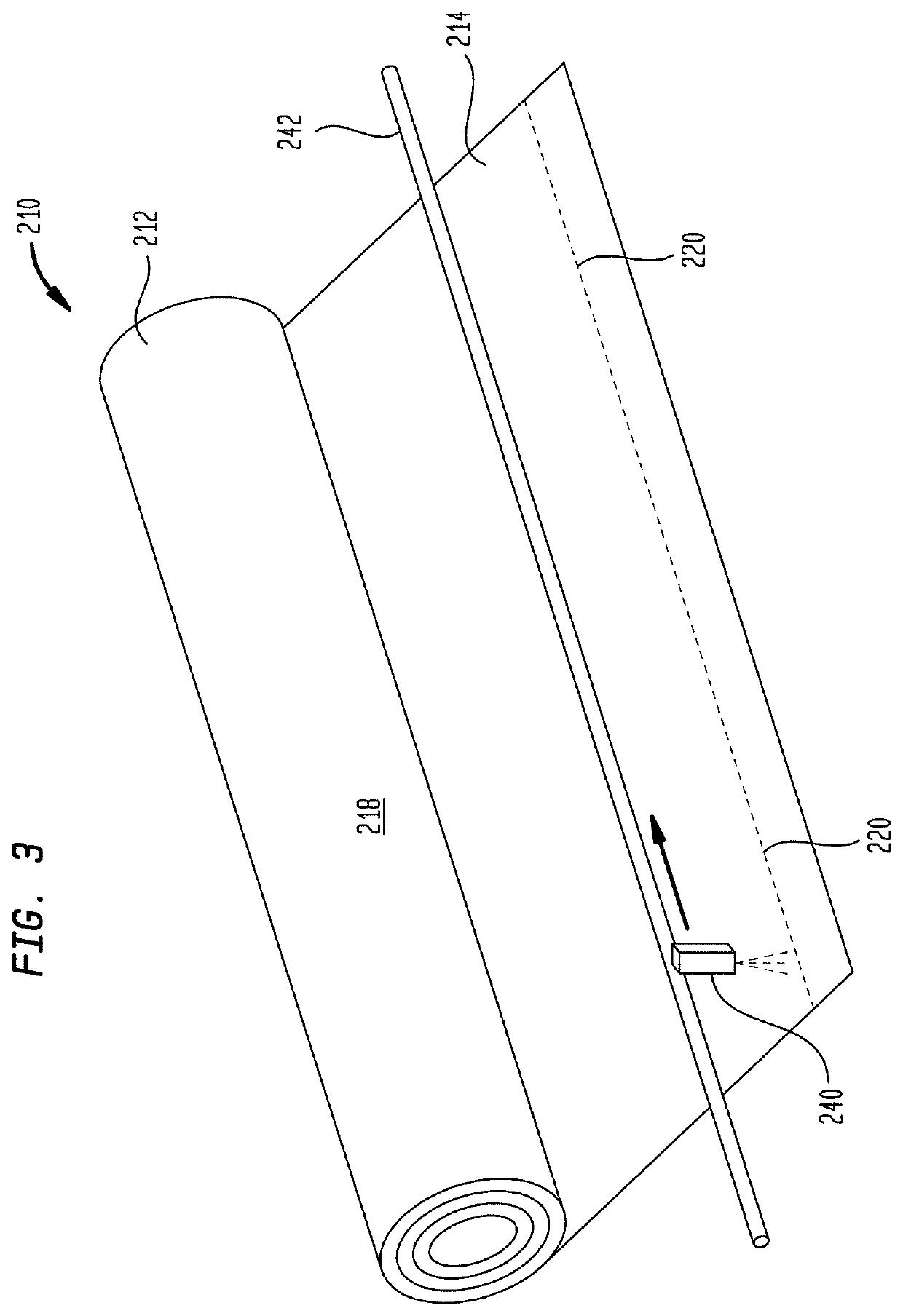Absorbent sheet tail-sealed with nanofibrillated cellulose-containing tail-seal adhesives
a technology of nanofibrillation and cellulose, applied in the field of absorbent paper sheets, can solve the problems of increasing the cost of rolled goods, and reducing the quality of rolled goods, so as to achieve optimal levels enhance the effect of tail-sealing bond strength
- Summary
- Abstract
- Description
- Claims
- Application Information
AI Technical Summary
Benefits of technology
Problems solved by technology
Method used
Image
Examples
examples
[0087]Laboratory tail-sealing testing was conducted with an automated tail-sealing apparatus on rolls of 2-ply absorbent sheet product. The tails of sample rolls were placed under a 100 ml syringe dispenser. A control box regulated the dispensing speed of tail-seal adhesive and the pressure to dispense. The amount of dispensing tail-seal glue can also be controlled by using different tip size of syringe tips. To determine the weight of tail-seal glue that is applied on a 4 inch wide tissue roll along a tail-seal adhesive line, a blotter paper cut to 4″×4″ was used. The weight differences of the blotter paper before and after the tail-seal application indicates the weight of tail-seal that applied on the sample roll. After each tail-seal application on the sample roll, the roll was gently rolled to close the tail and aged at room temperature for a minimum of 24 hours before testing for tail-seal bond strength. After aging, tail-seal bond strength was measured as described hereinafter...
examples 1-10
[0088]A first series of experiments were carried out using the materials enumerated in Table 4, where results also appear. It is seen that a variety of NFC Tail-Sealing Adhesives are effective to bond the tail-seal, with the composition and application level influencing the Tail-Seal Bond Strength. Optimum levels are readily achieved. Results seen in Table 4 are presented graphically in FIGS. 6 and 7.
[0089]
TABLE 4Tail-Seal Trials Examples 1-10Tail-SealBondEx-StrengthGlueampleAdhesiveProduct(g)wt. (g)Evaluation14.8%CWP Tissue900.134AcceptablePolymerGCBondGlue24.8%Structured320.134Too LightPolymerGCTissue34.6%CWP Tissue2210.128Too Strong / PolymerGCPlyGlue / 0.071%SeparationNFC44.6%Structured810.128AcceptablePolymerGCTissueBondGlue / 0.071%NFC50.5% NFC / Structured1220.127Acceptable0.1 XGTissueBond60.25% NFC / Structured29—Too Light0.1% XGTissue70.25% NFC / CWP Tissue48—Too Light0.1% XG85.5%TAD Towel200.153Too LightPolymerGCGlue92.5%TAD Towel380.108Too LightPolymerGCGlue / 0.27%NFC102.5%TAD Towel12...
examples 11-18
[0090]Examples 11-18 were conducted following generally the procedures of Examples 1-10. In Examples 11-18, 2-ply tissue rolls were used and the amount of Tail-Seal Adhesive applied was adjusted to 0.328 g / roll. A different set of adhesives were used, as is enumerated in Table 5. Results are presented graphically in FIG. 8 and details appear in Table 6.
[0091]
TABLE 5Tail-Seal AdhesivesMaterialComponentsControlPolymerGC Glue (diluted to 5%)CH15.5% PolymerGC Glue + 0.048% NFC(Total solids 5.548%)CH20.1% NFC + 1.35% XG(total solids 1.45%)CH32.9% Glycol / CellD + 0.675% XG +0.05% NFC (total solids 3.625%)
[0092]
TABLE 62-Ply Tissue Tail-Seal ResultsExampleTissue / ChemistryTail-Seal Bond Strength (g)11Structured / Control6512CWP / Control11813Structured / CH1123.414CWP / CH1221.815Structured / CH2275.816CWP / CH2372.517Structured / CH3286.518CWP / CH3523.8
[0093]In the foregoing examples, the adhesive contents designated PolymerGC Glue are actually diluted commercial adhesives based mostly on PEG and water sol...
PUM
| Property | Measurement | Unit |
|---|---|---|
| weight ratio | aaaaa | aaaaa |
| surface tension | aaaaa | aaaaa |
| surface tension | aaaaa | aaaaa |
Abstract
Description
Claims
Application Information
 Login to View More
Login to View More - R&D
- Intellectual Property
- Life Sciences
- Materials
- Tech Scout
- Unparalleled Data Quality
- Higher Quality Content
- 60% Fewer Hallucinations
Browse by: Latest US Patents, China's latest patents, Technical Efficacy Thesaurus, Application Domain, Technology Topic, Popular Technical Reports.
© 2025 PatSnap. All rights reserved.Legal|Privacy policy|Modern Slavery Act Transparency Statement|Sitemap|About US| Contact US: help@patsnap.com



